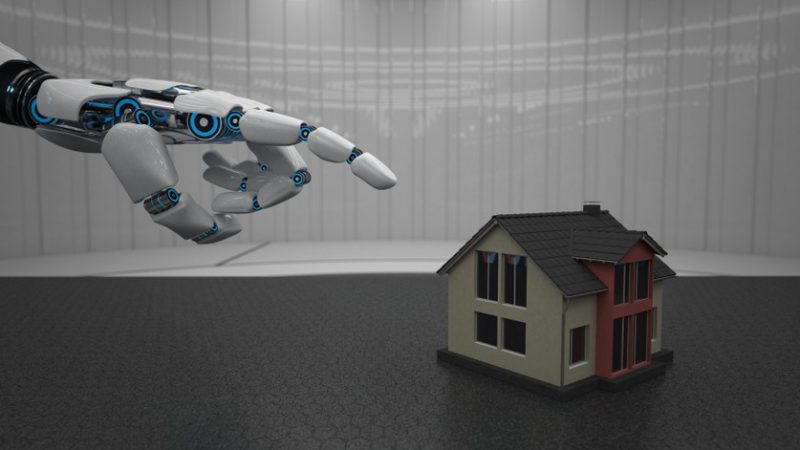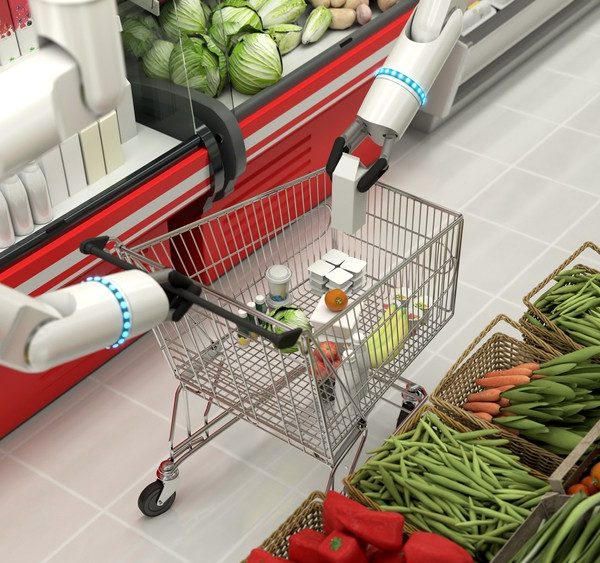
Farming Robots That Use AI
The agriculture industry has come a long way in terms of technological advancements, and the latest trend in this field is the use of farming robots that utilize artificial intelligence (AI). These robots assist farmers in various tasks, including planting crops, watering plants, and harvesting fruits and vegetables, among others. In this article, we will explore the concept of agricultural robots and their benefits, as well as discuss the concerns surrounding their impact on the workforce.
Understanding Agricultural Robots
In simple terms, agricultural robots are machines that automate specific functions in the farming industry. They are designed to perform tasks such as planting seeds or spraying pesticides based on algorithms that humans have programmed. Some robots even work alongside human farmers to complete certain tasks, improving overall efficiency.
Revolutionizing Farming: The Benefits of Agricultural Robots
Agriculture is a fundamental pillar of society that feeds billions of people worldwide. However, it can be an expensive and labor-intensive industry, which is why many farmers are turning to agricultural robots to optimize their processes. From weeding to harvesting, planting seeds to watering plants, robots can accomplish tasks that used to require significant human labor. In this article, we’ll explore the benefits of using agricultural robots and how they can help farmers increase their profits.
Read Also: AI in Food and Beverage Industry: Use Cases & Benefits
Weed Removal Made Easy
Weed removal is a tedious and expensive process that diverts resources from crop growth. Fortunately, agricultural robots can help farmers tackle this problem. These robots are designed to pull weeds out of fields, freeing up farmers to focus on growing their crops. By using vision sensors and GPS technology, these robots can distinguish between weeds and crops, minimizing disruption to nearby plants. This technology can be programmed to operate without human intervention, making weed removal a more cost-effective process.
Harvesting Made Simple
Harvesting is another labor-intensive and expensive part of farming that can significantly impact a farmer’s bottom line. However, agricultural robots can simplify this process by doing the harvesting for you. For example, robotic arms can work in orchards and pick ripe fruit without damaging it. These robots use cameras and sophisticated software with an algorithm to identify ripe fruit. Additionally, they can collect data about the crop, which helps farmers measure yields accurately. This information is essential for planning future harvests and improving crop quality.
Efficient Seed Planting
Planting seeds by hand is not an ideal solution for farmers with large fields. It can be time-consuming and inefficient, making it a costly process. Fortunately, agricultural robots can help plant seeds with precision and speed. These robots can work with humans to plant seeds or autonomously plant seeds using GPS technology. For example, the RoboWeeder2 can precisely place seeds into the ground at rates as fast as 0.4 acres per hour (40 seeded rows/hour). This speed and precision can help farmers optimize their planting process and save significant amounts of time and money.
Robots for Watering Plants
Watering plants is a crucial task that farmers must perform regularly. However, it is also a task that takes up a lot of time and resources. Moreover, if not done correctly, it could have disastrous consequences for the crops. Fortunately, using robots to do the work is such an efficient option.
Robots can use soil moisture sensors to determine where and when plants need watering. These sensors help the robots to determine the exact amount of water required by the crops. Many of these robots can also manage irrigation schedules for fields and adjust them automatically based on weather patterns. By doing so, farmers don’t have to worry about over or under-watering their crops.
Robots for Thinning Plants
Thinning and weeding are other essential tasks that farmers must perform to ensure their crops grow well. However, these tasks require precision, or they could damage the crops. Using robots for thinning plants has become a popular option for many farmers.
Subheading: How Robots Thinning Plants Works
Robots can fulfill both spacing and thinning needs. Spacing refers to the appropriate amount of space that should be left between plants, while thinning is removing excess plants that are taking up too much space. These tasks require precision, and technology makes it possible for robots to accomplish them easily.
Robots can use computer vision to identify plants that need to be removed and thin them out, ensuring that the remaining crops have enough space to grow. This technology makes thinning faster and more efficient than doing it by hand.
Advantages and Disadvantages of Using Agricultural Robots
As technology advances, more and more industries are turning to robots to automate their operations. Agriculture is no exception, and using agricultural robots has its own set of advantages and disadvantages. Let’s take a closer look at both sides of the coin.
Advantages of Agricultural Robots
- Reduce labor costs
One of the most significant advantages of using robots for farming is the reduction in labor costs. With agriculture being an expensive industry to operate in, farmers need to cut costs where they can. Using agricultural robots can help reduce dependency on human workers, ultimately lowering labor costs.
- Increase crop yields
Using robots for farm work can help farmers increase their crop yields. Farmers want every seed they plant to grow into a full-grown plant to harvest as much produce as possible. Agricultural robots can help minimize losses and increase crop yields, which translates to higher profits for the farm owner.
- Require less space
Another advantage of using agricultural robots is that they take up less space than traditional farm equipment. This is beneficial for farmers who have small plots of land and don’t want to worry about moving large pieces of equipment around. Many agricultural robots are multi-functional and can accomplish several tasks simultaneously.
Disadvantages of Agricultural Robots
- May not adapt fast enough
Agricultural robots might not adapt fast enough to maximize output and productivity, especially when it comes to weather changes and unforeseen circumstances. Although you can program a robot to do a specific job repeatedly, they aren’t as flexible as humans.
- Big upfront investment
Another disadvantage of using agricultural robots is the big upfront investment required to purchase them. This might deter some farmers from taking this route, but it could also encourage other farmers to learn more about the potential opportunities of using these machines on the farm.
- Expensive to maintain
Not only are agricultural robots expensive to purchase, but they can also be costly to maintain. The cost of replacing parts and servicing these machines could drain the farm owner’s resources, depending on the problem. Additionally, if a robot stops working altogether, it could be a significant setback for the farm and result in delays in production.
- Require a learning curve
Finally, agricultural robots might require a learning curve when using them for farming purposes. It takes time to become proficient with these kinds of machines, especially if they are multi-functional and can accomplish several tasks simultaneously.
Read Also: AI in Home Robots: How is it Used?
Conclusion
The use of agricultural robots on farms has numerous advantages and a few drawbacks. At present, the benefits seem to outweigh the costs, particularly in terms of increasing crop yields, using less space compared to conventional equipment, and reducing labor needs.
Although an initial investment is required to acquire such robots, the drawbacks are outweighed by the benefits. Hence, farmers can be convinced to invest in agricultural robots because of the advantages they offer.























